I have been learning about arrays and an interesting question popped up in my head.
I was wondering that with the current Java version, is there a way for me to print a character string n and make it appear for a brief moment at every index of an array consisting of only "", and then towards the end of the array, it can stop when it reaches the end index of the array.
For example if here is the given array and string n = "2" :
[2,"","","",""]
the code will continously update like
["2","","","",""]
["","2","","",""]
["","","2","",""]
["","","","2",""]
["","","","","2"]
and the end result would be
["","","","","2"]
I would like to see the whole movement of "2" being played out without printing any excess arrays ( no more than one array should be in the output).
Is this possible? If yes, can you please suggest what should I look over to learn how to do this?
